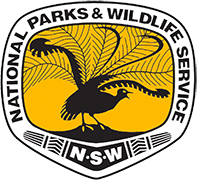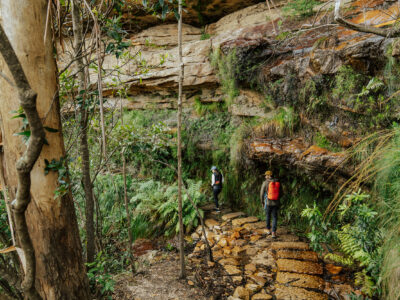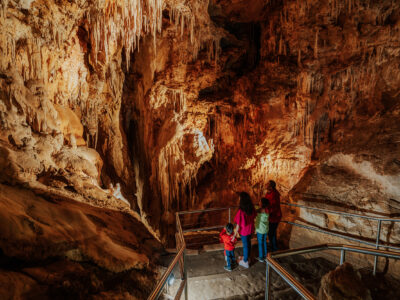There’s a perception that our rangers and field officers spend their days spotting wildlife and guiding tours. But this couldn’t be further from the truth. As well as managing our infrastructure and doing important conservation work, our rangers and field officers fight bushfires across Australia (and sometimes overseas).
We’re proud to have over 1200 highly trained and experienced firefighters at NSW National Parks, who take on the important role of protecting lives, property and the natural environment.
-
Joining The Team
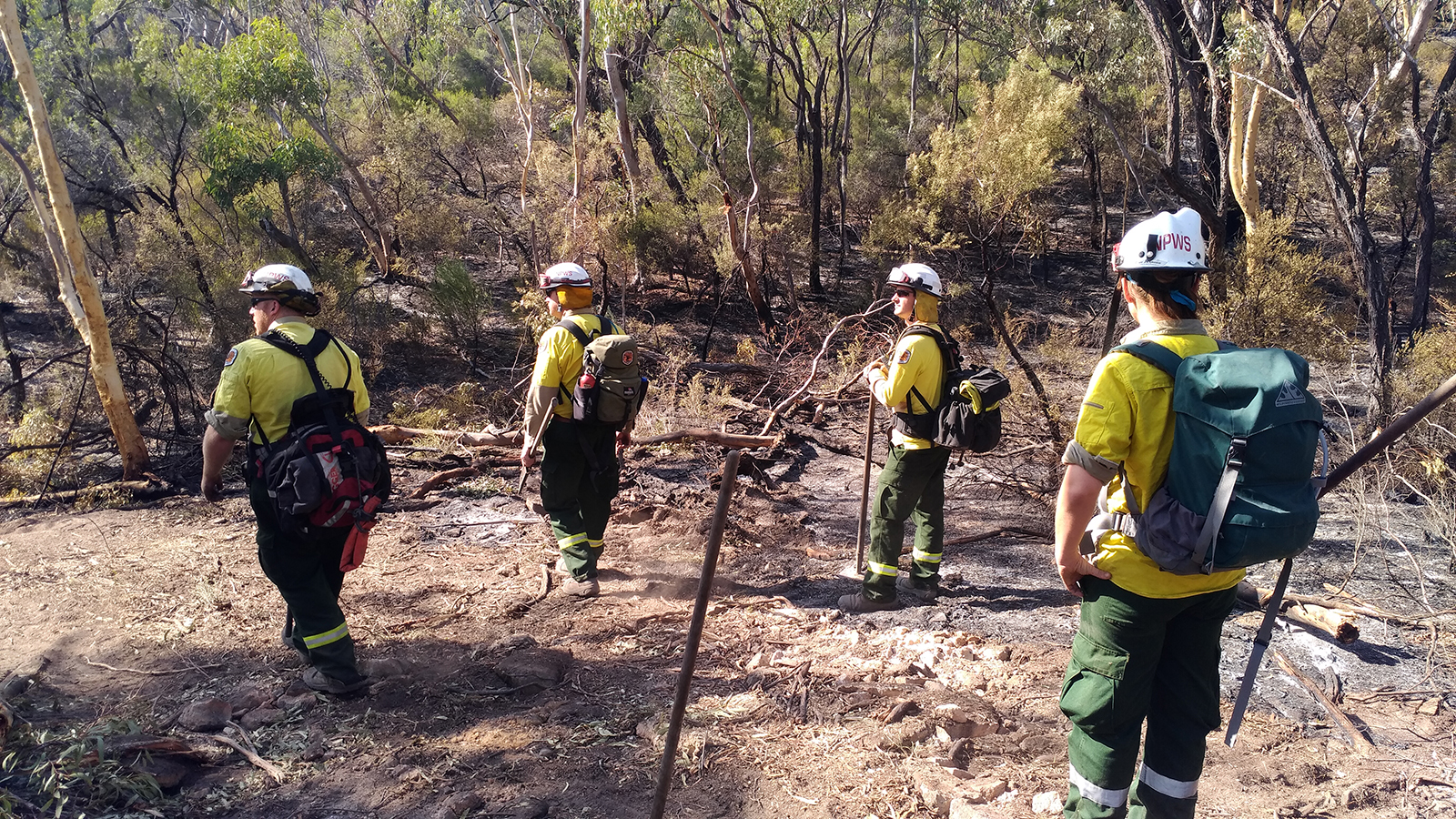 Photo Information
Photo InformationOur remote firefighters work in rugged terrain and use dry firefighting techniques to suppress bushfires
David Croft/DPIE
It takes a lot of hard work to become a firefighter with NSW National Parks. After five days of initial training, firefighters have to pass fitness tests, helicopter safety accreditation, chainsaw training, fire preparedness days, plus a certain number of supervised hours on the ground. They can also do more training to get promoted into other roles, like crew leader, division commander or incident management.
“I decided to become a firefighter when I was nine years old and my father took me to help fight a bushfire on a neighbour’s farm. I spent the afternoon running around putting out spot fires and decided then and there that I wanted to fight bushfires when I was older. Firefighting was one of the reasons I wanted to work at NSW National Parks. I find it incredibly worthwhile and enjoy making a difference.” – David Croft, Ranger, Greater Sydney Branch
-
Prepping For Fire Season
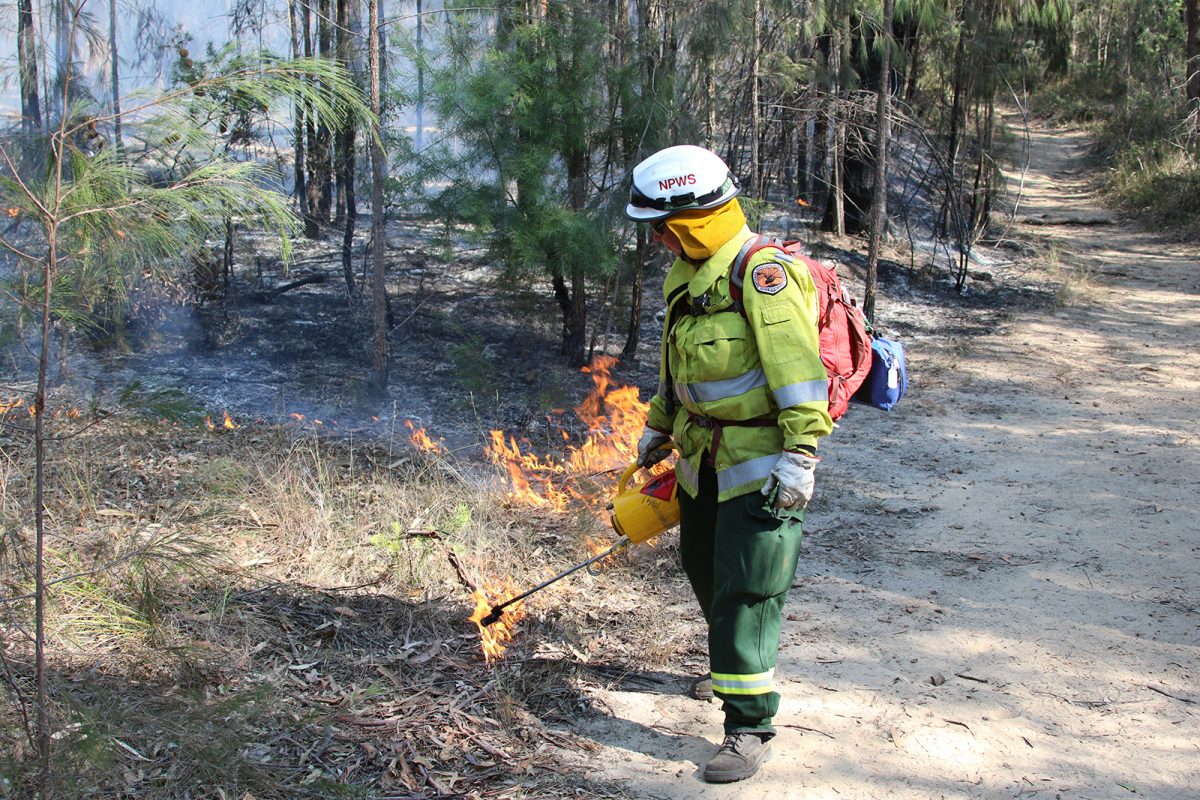 Photo Information
Photo InformationA hazard reduction burn in action, low intensity burn undertaken in cooler months of Spring and Autumn to reduce fuel loads
Blue Mountains National Park
David Croft/DPIE
Hazard reduction is about reducing the amount of fuel (like dead leaves and plants) on the ground, to help reduce the intensity of fire so it’s easier to control. Firefighters do this by slashing, mowing or clearing vegetation, as well as planned burning. By lighting controlled, low-intensity fires when the weather is right, they can reduce the risk of bushfires and help protect lives and property. These low-intensity burns are done in the cooler months of Spring and Autumn.
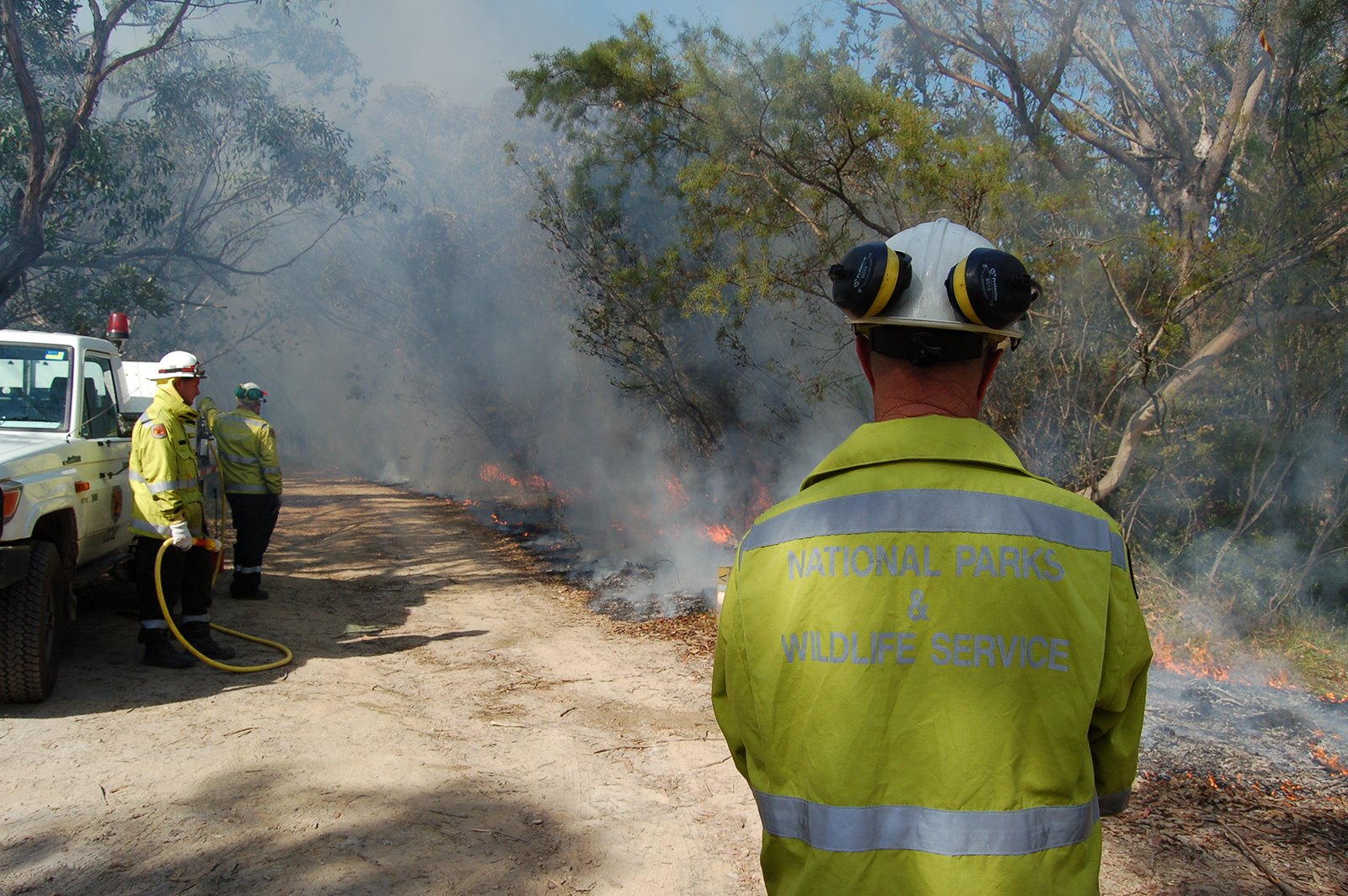 Photo Information
Photo InformationFirefighters using low intensity burns (aka hazard reduction burns) to reduce fuel loads
Brisbane Water National Park
Susan Davis/DPIE
Hazard reduction burns are carefully planned in partnership with neighbours, the community and other fire fighting authorities like the NSW Rural Fire Service. On the day, firefighters on the ground use drip torches to light up small sections of bush. Helicopters may also be used to drop small ignitions into remote areas. Once the area is burned, they make sure the fire is completely extinguished or ‘blacked out’.
“As a ranger, I plan hazard reductions. This involves talking to park neighbours about planned burns, working with the NSW Rural Fire Service to work out the best way to protect neighbouring properties, Aboriginal and historic sites, and threatened plants and animals.” – Sarah Brookes, Ranger Wollemi Yengo Area, Blue Mountains
Did you know? Burning isn’t the only way to do hazard reduction. Firefighters also use mechanical tools to clear vegetation and reduce fuel levels.
Watch how our NPWS firefighters use helicopters to approach remote fires:
-
Responding To Bushfires
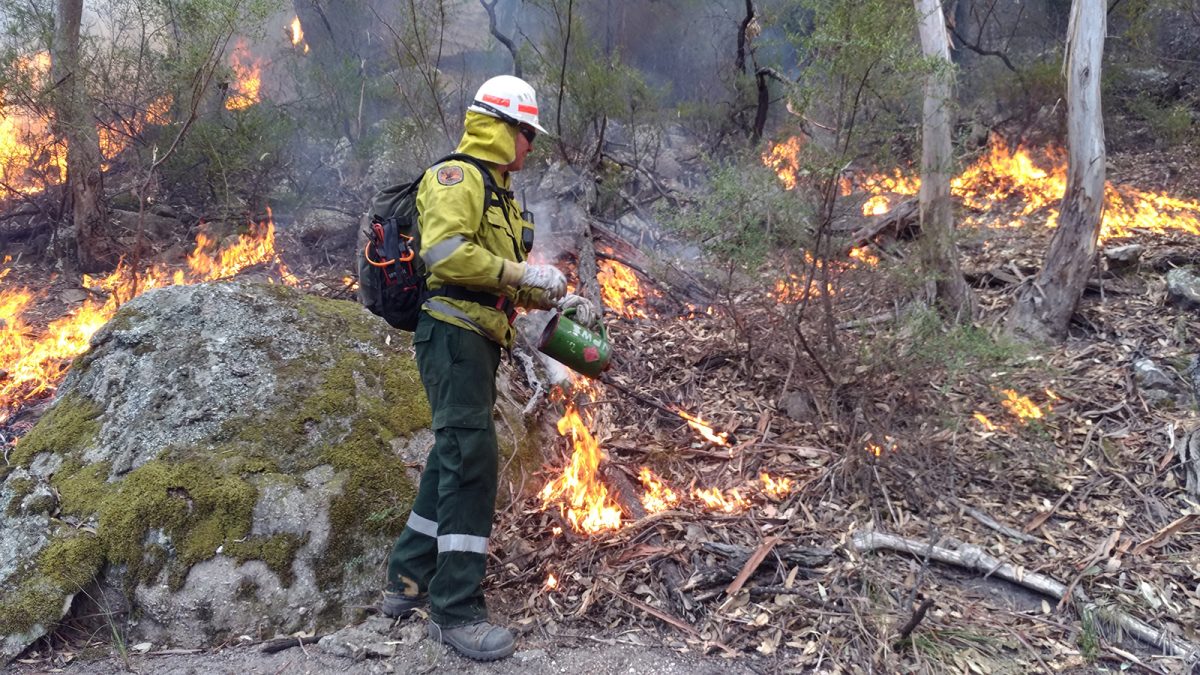 Photo Information
Photo InformationA firey backburning to help control a bushfire
David Croft/DPIE
While hazard reduction burns are carefully planned and controlled, bushfires are…well, not. They usually happen when it’s hot, dry and windy. And they can start from lightning, escaped campfires, arson, cigarette butts or powerlines. Our firefighters respond quickly so they can get the fire under control and extinguish it. In this business, timing is everything.
 Photo Information
Photo InformationA firey using the dry fire fighting technique using rake hoe
David Croft/DPIE
Our firefighters respond with a 4WD vehicle loaded with 500 litres of water, or a helicopter with a giant bucket of water that gets dumped on the fire from above. In remote regions where there isn’t much water, dry firefighting techniques are used, like scraping to slow the fire or stop it from spreading.
Do you know the difference between Hazard reduction burn and back Burning? Both are very different and often confused by the media. A back burn is something that is done to help control a wildfire, a hazard reduction burn is undertaken outside of fire season to reduce fuel loads.
Watch what our NPWS firefighters have to do to help control bushfires:
“I love being put into the middle of the bush with nothing but our packs and tools, working hard to get the job done. It’s great teamwork, particularly with your fellow ground crews but also with the aviation crews who give us buckets of water and pick us up at the end of the day.” – Leigh Nolan, Team Leader Fire, Greater Sydney Branch
Did you know? Our rapid aerial response teams respond to fires within 30 minutes of detection, keeping around 90% of fires below 10 hectares in size. Teams of firefighters also wait with a helicopter on bad fire weather days so they can respond quickly to ignitions.
-
A Joint Effort
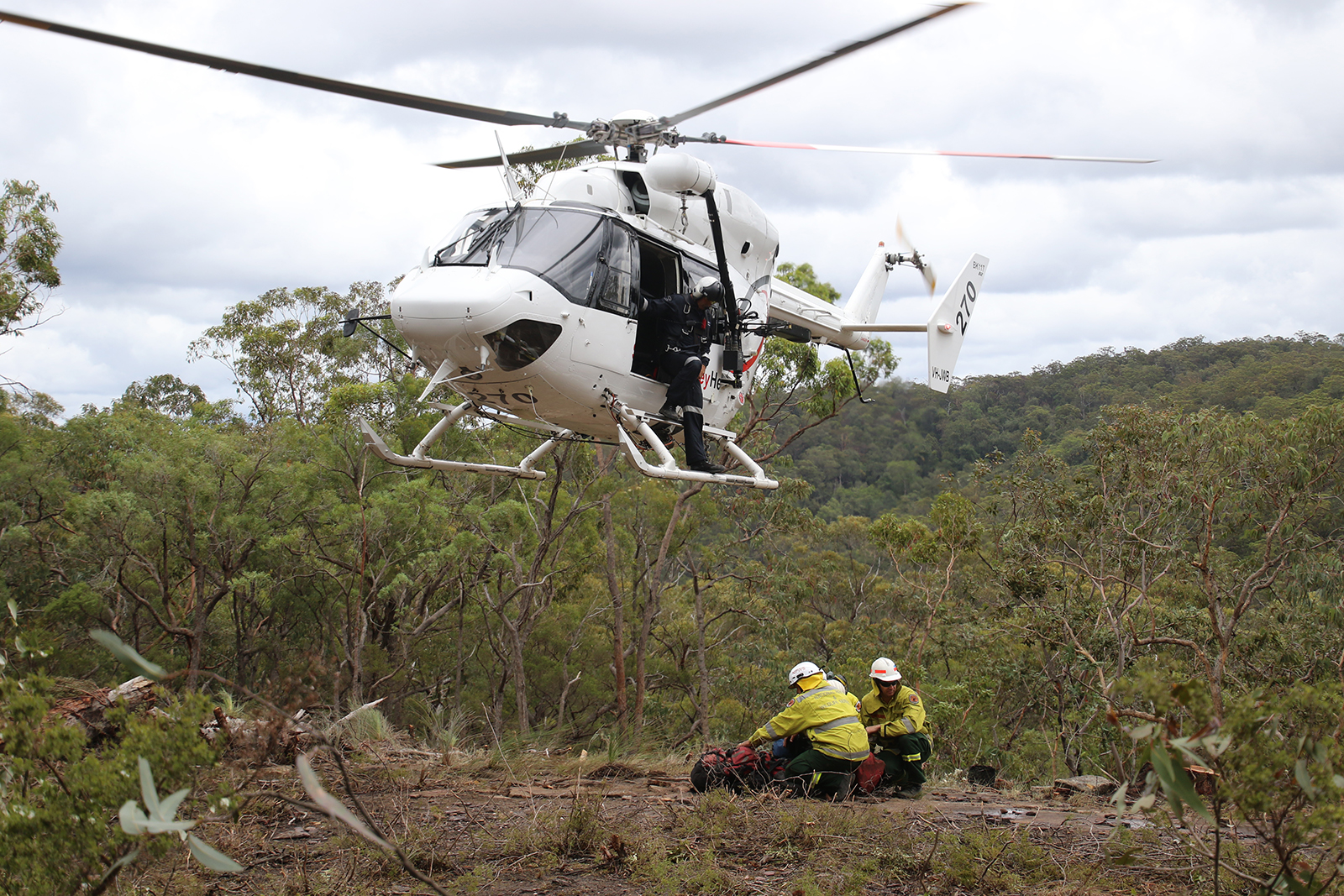 Photo Information
Photo InformationRemote crews helicoptered into Yengo National Park
Yengo National Park
David Croft/DPIE
Managing fires in national parks is definitely a team effort. Firefighters work closely with authorities like the NSW Rural Fire Service, Fire and Rescue NSW, Forestry Corporation of NSW and more than 120 bushfire management committees across the state, to make sure everyone is on the same page.
During major bushfires, we have key people sitting in the NSW Rural Fire Service state operations centre to coordinate with teams on the ground and in incident management positions. We also work with Aboriginal communities to involve them in fire management.
“It’s really important that we work with the NSW Rural Fire Service. They know the neighbouring properties and we know the national parks. Together, we can be an effective team, using our expertise and resources in hazard reduction burns and bushfires to protect lives and properties.” – Jeff Betteridge, Ranger, Central Coast Area, Hunter Central Coast
Did you know? Lightning strikes are the most common cause of bushfires in NSW national parks.
Our firefighters are a brave lot and we appreciate the important work they do. So when you’re in a national park, make sure you’re up to speed on fire safety and stick to the rules—like not smoking or gathering firewood, and checking for any alerts or fire bans before you leave home.
It’s also important to make sure your campfire is fully extinguished before leaving it. Not only does it keep everyone safe, it also protects the plants and animals that call our national parks home.
